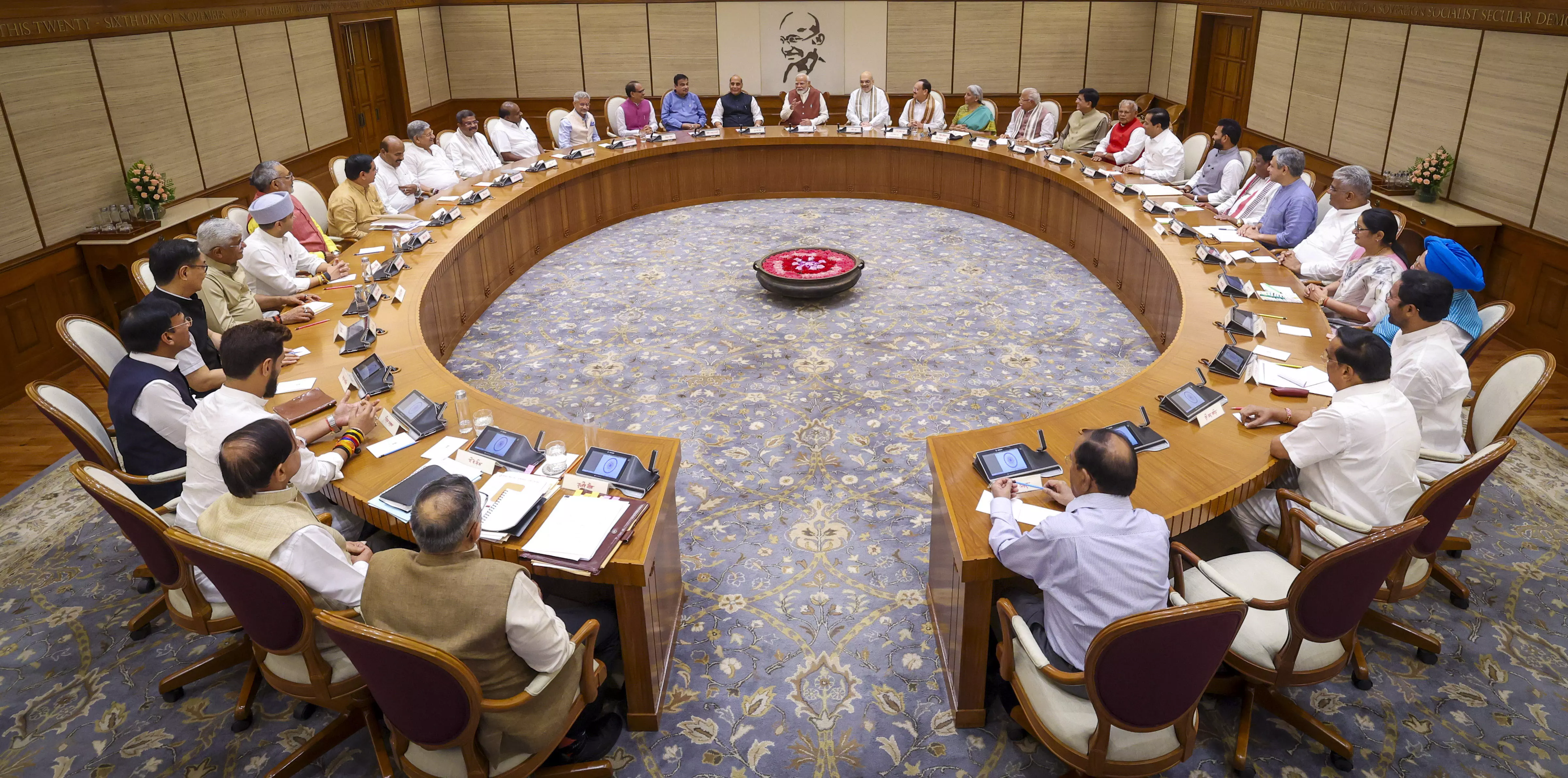DC Edit | New Cabinet: It’s more continuity than change

The composition of the third edition of the Narendra Modi ministry at the Centre with the re-induction of most of the heavyweight members of the previous team with their portfolios indicates that the government trusts more in continuity than in change; the only addition being the representation given to the alliance partners, a compulsion of coalition politics.
The NDA has managed a majority in the Lok Sabha despite losing heavily in the crucial state of Uttar Pradesh and extensively using the worst side of aggressive Hindutva basically because of the Modi guarantees. In the larger sense, it means a journey to the dream of ‘viksit Bharat’ or a developed India by 2047 when the country celebrates its centenary of independence. It also includes the promise to take India to the third slot in the list of large economies, from the current fifth position.
If the promises were to be met, then the government will have to work in 360 degrees, instead of plucking the low-hanging fruit as it has done in the last two terms. Several measures which expected to be path-breaking in the past two terms ended up in fiasco. Demonetisation never delivered the announced benefits nor did the Goods and Service Tax regime ease the troubles of enterprises.
The skin-deep policy changes have resulted in widespread economic distress in the rural areas and unprecedented rate of unemployment. It only meant that India’s jump to the fifth position among the large economies has not benefitted the large majority of its population and the growth failed to create jobs for its youth, especially educated youth. The government’s attempts to reform the agriculture sector have not been accepted by the farming community which feared a total sell out of their interests to corporates by the government. Agnipath is seen a move more by the government and not by the armed forces. Better planning is needed for Mr Modi’s team to deliver on its promises.
The Prime Minister had inducted professionals along with seasoned politicians in his team in the last term, which was a bold experiment. It has paid off in areas such as external affairs where India has been successfully negotiating with conflicting parties keeping the national interest at the focus. However, it is yet to be seen productive in areas such as information and technology. India’s widening trade deficit with China, and the role import of electronics hardware plays in it, are an indicator that there are areas where India has a large maneuvering space. The new team should be able to identify such gaps and fill them so that the economy can leap forward.
The exclusion of leaders who lost elections from the ministry sends the right message that the Prime Minister is mindful of people’s opinion. It may not be a vote on their individual performance as ministers but keeping them off the new team sends a message, and that must be appreciated.
While the majority of the cabinet members — 25 of 30 — belong to the BJP, the presence of the alliance partners will help the team get a wider perspective than the previous team. It is up to the Prime Minister to goad the team to be receptive to the diversity that India is fundamentally built on, and guide the nation in the years to come.
